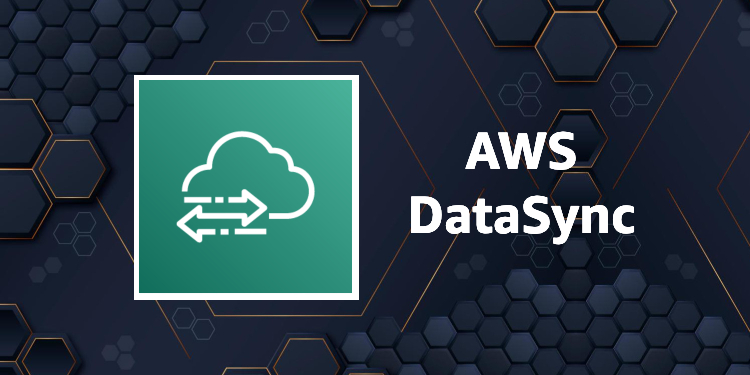Unveiling the Power of AWS Data Sync: A Deep Dive into Seamless Data Transfer
 Sumit Mondal
Sumit Mondal
In the realm of cloud computing, Amazon Web Services (AWS) stands as a stalwart, continually pushing the boundaries of what's possible. One of the lesser-known gems in the AWS arsenal is Data Sync, a powerful service that enables seamless and efficient data transfer between on-premises storage and AWS storage services. In this blog post, we'll embark on a journey to explore the ins and outs of AWS Data Sync, complete with real-world examples and hands-on images to demystify its capabilities.
Understanding AWS Data Sync
AWS Data Sync is a fully managed service designed to simplify and accelerate the transfer of large amounts of data between on-premises storage and AWS storage services. It acts as a bridge, facilitating data movement without the need for complex scripts or manual intervention. Whether you're migrating data to AWS, replicating data for disaster recovery, or simply synchronizing data between on-premises and cloud environments, AWS Data Sync is a versatile solution.
Key Features of AWS Data Sync
1. Simple Configuration:
Setting up AWS Data Sync is a breeze. With a few clicks on the AWS Management Console, you can configure source and destination endpoints, map your data, and specify transfer options. This simplicity makes it accessible to users with varying levels of technical expertise.
2. Support for Multiple Protocols:
AWS Data Sync supports a variety of protocols, including NFS, SMB, and S3. This flexibility allows you to integrate seamlessly with your existing storage infrastructure, ensuring a smooth transition to the cloud.
3. Incremental Transfers:
One of the standout features of AWS Data Sync is its ability to perform incremental transfers. Instead of transferring the entire dataset every time, it only transfers the changes since the last synchronization. This not only saves time but also optimizes bandwidth usage.
4. Scheduling and Automation:
Automation is at the heart of AWS Data Sync. You can schedule transfers to occur at specific intervals, reducing the need for manual oversight. This is particularly useful for businesses with recurring data transfer needs.
5. Logging and Monitoring:
Detailed logging and monitoring capabilities provide visibility into the transfer process. You can track the status of ongoing transfers, view transfer history, and set up notifications for specific events, ensuring a proactive approach to managing your data.
Hands-On with AWS Data Sync
Let's dive into a hands-on example to illustrate the power and simplicity of AWS Data Sync. In this scenario, we'll consider a common use case: migrating on-premises data to Amazon S3.
Step 1: Set Up AWS Data Sync
Access the AWS Management Console: Log in to your AWS account and navigate to the AWS Data Sync console.
Create a Task: Click on "Create task" to initiate the setup process. Define your source location (on-premises) and destination location (Amazon S3).
Step 2: Configure Transfer Options
Choose Transfer Mode: Select the transfer mode based on your requirements. Options include "Synchronize," "Verify," and "Overwrite." For a migration scenario, "Synchronize" is typically the preferred choice.
Specify Task Schedule: Configure the task schedule to automate the data transfer process. This ensures that your data stays up-to-date without manual intervention.
Step 3: Map Data and Start Transfer
Map Source and Destination: Define how your on-premises data maps to the destination in Amazon S3. This step ensures that data is transferred accurately.
Start Transfer: Once configured, initiate the data transfer. AWS Data Sync will handle the movement of data, and you can monitor progress in the console.
Step 4: Monitor and Optimize
Monitor Transfer Status: Use the AWS Data Sync console to monitor the status of your transfers. Detailed logs provide insights into transfer performance and any potential issues.
Optimize for Incremental Transfers: Leverage the incremental transfer feature to ensure that only changes are transferred, reducing the time and resources required for subsequent syncs.
Real-World Applications
1. Migrating On-Premises Databases to Amazon RDS:
Suppose you're tasked with migrating a large on-premises database to Amazon RDS. AWS Data Sync simplifies the process, allowing you to smoothly transition your data to a managed database service without the complexities of manual migration.
2. Disaster Recovery Preparedness:
In the event of a disaster, having a reliable and up-to-date backup is crucial. AWS Data Sync enables continuous synchronization between on-premises storage and Amazon S3, providing a robust disaster recovery solution with minimal data loss.
3. Hybrid Cloud Architectures:
Many organizations operate in hybrid cloud environments, combining on-premises infrastructure with AWS services. AWS Data Sync facilitates seamless data flow between these environments, ensuring consistency and accessibility.
Conclusion
AWS Data Sync emerges as a hidden hero in the AWS ecosystem, simplifying the intricacies of data transfer between on-premises and AWS storage services. Its intuitive interface, support for multiple protocols, and automation capabilities make it a valuable tool for a range of scenarios, from data migration to disaster recovery preparedness.
As you embark on your cloud journey, consider the role AWS Data Sync can play in streamlining your data transfer workflows. With its power and simplicity, it's a testament to AWS's commitment to providing tools that empower users to harness the full potential of cloud computing.
Subscribe to my newsletter
Read articles from Sumit Mondal directly inside your inbox. Subscribe to the newsletter, and don't miss out.
Written by

Sumit Mondal
Sumit Mondal
Hello Hashnode Community! I'm Sumit Mondal, your friendly neighborhood DevOps Engineer on a mission to elevate the world of software development and operations! Join me on Hashnode, and let's code, deploy, and innovate our way to success! Together, we'll shape the future of DevOps one commit at a time. #DevOps #Automation #ContinuousDelivery #HashnodeHero